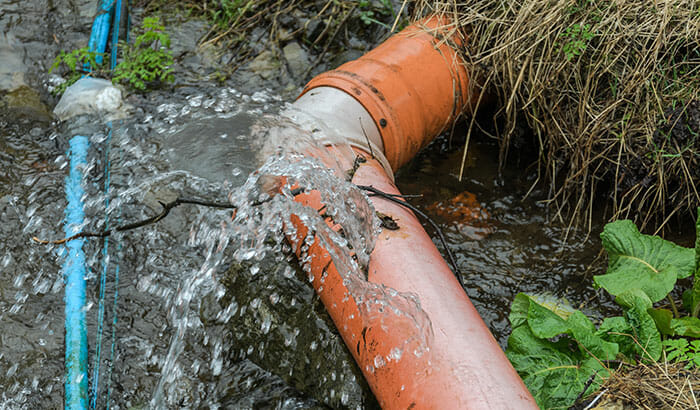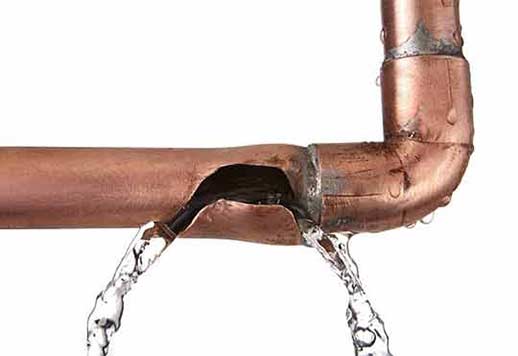What to Do When a Burst Pipe Causes Water Damage in Your Home
Preventing Ruptured Pipes: Crucial Tips to Safeguard Your Pipes
Avoiding ruptured pipelines is a critical problem for property owners, especially during colder months when the danger of freezing is increased. Applying tactical actions such as proper insulation, regular assessments, and maintaining regular interior temperatures can substantially reduce the probability of pipeline failing.
Understand Pipe Vulnerabilities
Understanding pipeline susceptabilities is vital for effective pipes upkeep and protecting against costly damage. A number of aspects contribute to the vulnerability of pipelines to bursts, consisting of product composition, age, and ecological conditions. Older pipes, particularly those made from galvanized steel or polybutylene, frequently degrade over time, bring about boosted risk of leaks and ruptures.
Temperature variations can likewise considerably effect pipe stability. In cooler climates, water caught in pipelines can ice up, increasing and applying stress on the pipe wall surfaces, which may eventually cause a ruptured. High water pressure can stress pipes, especially at bends and joints, enhancing the likelihood of failing.

Insulate Pipes Properly
Proper insulation of pipelines is vital for preventing freezing and subsequent bursts throughout winter (burst pipe). Shielding your plumbing system efficiently safeguards versus temperature level drops that can cause expensive damage. Begin by determining prone locations where pipes are subjected to outdoor temperature levels, such as basements, attic rooms, and outside wall surfaces
Use foam pipeline insulation sleeves or cover insulation tape around these areas to provide a safety obstacle. Make sure that all areas of the pipelines, particularly those with limited heat exposure, obtain adequate insulation. Pay special attention to fittings and joints, as these are more at risk to cold.
When shielding, it's necessary to choose materials that satisfy local building regulations and are ideal for the details setting. Fiberglass insulation is typically suggested for its thermal resistance residential or commercial properties. Additionally, consider making use of heat cables or tape in extreme conditions, which can be plugged in to supply additional warmth
Consistently evaluate protected pipelines for any type of signs of wear or damages, as jeopardized insulation can reduce its efficiency. By taking these aggressive procedures, you considerably minimize the risk of pipeline ruptureds, guaranteeing a reliable plumbing system throughout the winter months.
Maintain Regular Temperature
A stable interior temperature is necessary for protecting against ruptured pipes during the cold months. When temperatures decline, water within pipelines can ice up, creating and expanding pressure that might eventually trigger the pipes to ruptured. To minimize this risk, house owners should keep a consistent temperature throughout their space, preferably no less than 55 ° F(13 ° C)Making use of a programmable thermostat can help manage indoor temperature levels properly, making certain that areas with pipes remain warm even when your home is empty. Pay unique attention to areas that are a lot more at risk to chilly, such as attic rooms, cellars, and garages. Keeping cupboard doors open under sinks can likewise enable warmer air from the home to circulate around plumbing.
This minor circulation of water can prevent cold by relieving stress within the pipelines. By carrying out these methods, homeowners can considerably minimize the risk of pipeline ruptureds and safeguard their pipes systems versus the harsh winter elements.
Regularly Examine Plumbing
Regular evaluations of pipes systems are essential for protecting against ruptured pipes and maintaining overall home integrity. During these evaluations, it is necessary to examine noticeable pipelines for indications of deterioration, leaks, or use.
In addition, checking links and joints is vital, as these points are usually vulnerable to leaks. Property owners need to likewise analyze water stress levels, as excessive stress can stress the pipes system and raise the threat of pipe bursts.
Take into consideration scheduling expert pipes assessments at the very least yearly, specifically prior to winter months, to ensure your system is prepared for chillier temperatures. Routine evaluations not only assist in recognizing instant issues however likewise foster long-lasting upkeep methods that can improve the lifespan of your plumbing system. By being proactive in your method, you can safeguard your home versus the turbulent and costly effects of burst Homepage pipelines. Prioritizing plumbing examinations is an investment in your home's health and wellness.
Know Emergency Treatments
Comprehending emergency situation treatments is important for every house owner, specifically after conducting routine plumbing examinations. Being prepared for a pipes emergency situation can significantly minimize damage and save prices.
Next, keep necessary tools convenient. A pipes emergency situation kit should consist of a wrench, plunger, and towels, as well as a flashlight and a bucket for little leakages. In addition, think about having the get in touch with info for a relied on plumbing professional conveniently offered, ought to the circumstance escalate beyond your control.
If you identify a leak or burst pipeline, quickly switch off the water and notify your plumbing technician. Moreover, document the damage with pictures for insurance coverage objectives. burst pipe. Be mindful of the indications of prospective pipes problems, such as uncommon water pressure changes or damp spots on walls
Eventually, proactive expertise and speedy action are vital in taking care of plumbing emergencies, ensuring your home continues to be safeguarded and reducing prospective damages.

Conclusion
Finally, stopping ruptured pipes demands a complex strategy that consists of understanding pipe vulnerabilities, correct insulation, preserving constant interior temperatures, normal evaluations, and knowledge of emergency treatments. By applying read this post here these essential methods, the danger of plumbing failures can be substantially reduced, thus ensuring the longevity and performance of the pipes system. Proactive visit the site measures not only protect against possible damages but additionally add to general water preservation and the security of building.
In chillier climates, water entraped in pipes can freeze, putting in and expanding pressure on the pipeline walls, which may ultimately lead to a ruptured. When temperatures decrease, water within pipelines can freeze, expanding and producing pressure that may eventually create the pipes to burst. By carrying out these techniques, property owners can dramatically minimize the risk of pipe bursts and guard their pipes systems against the rough winter season aspects.
